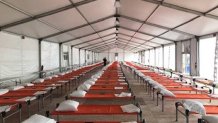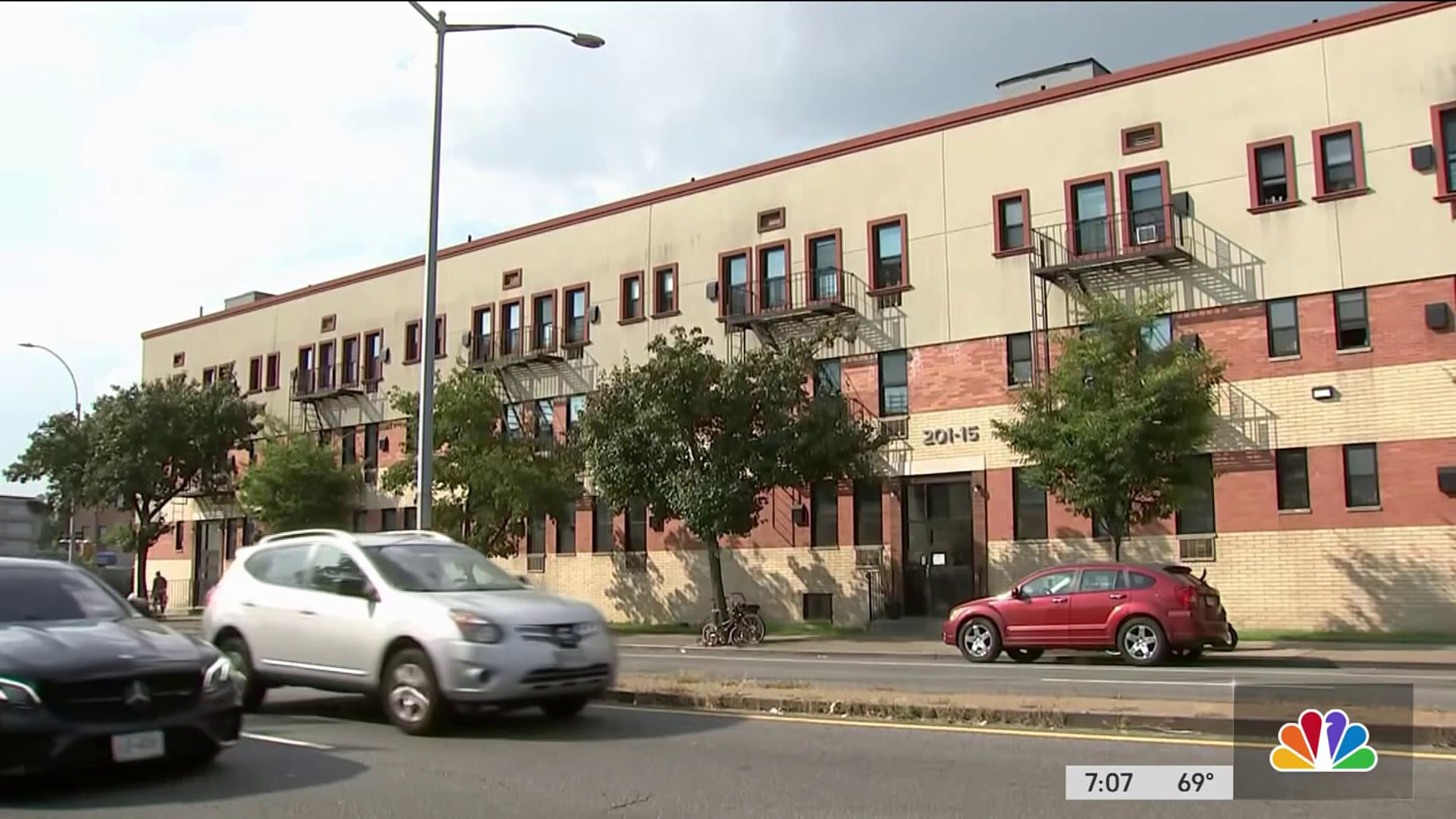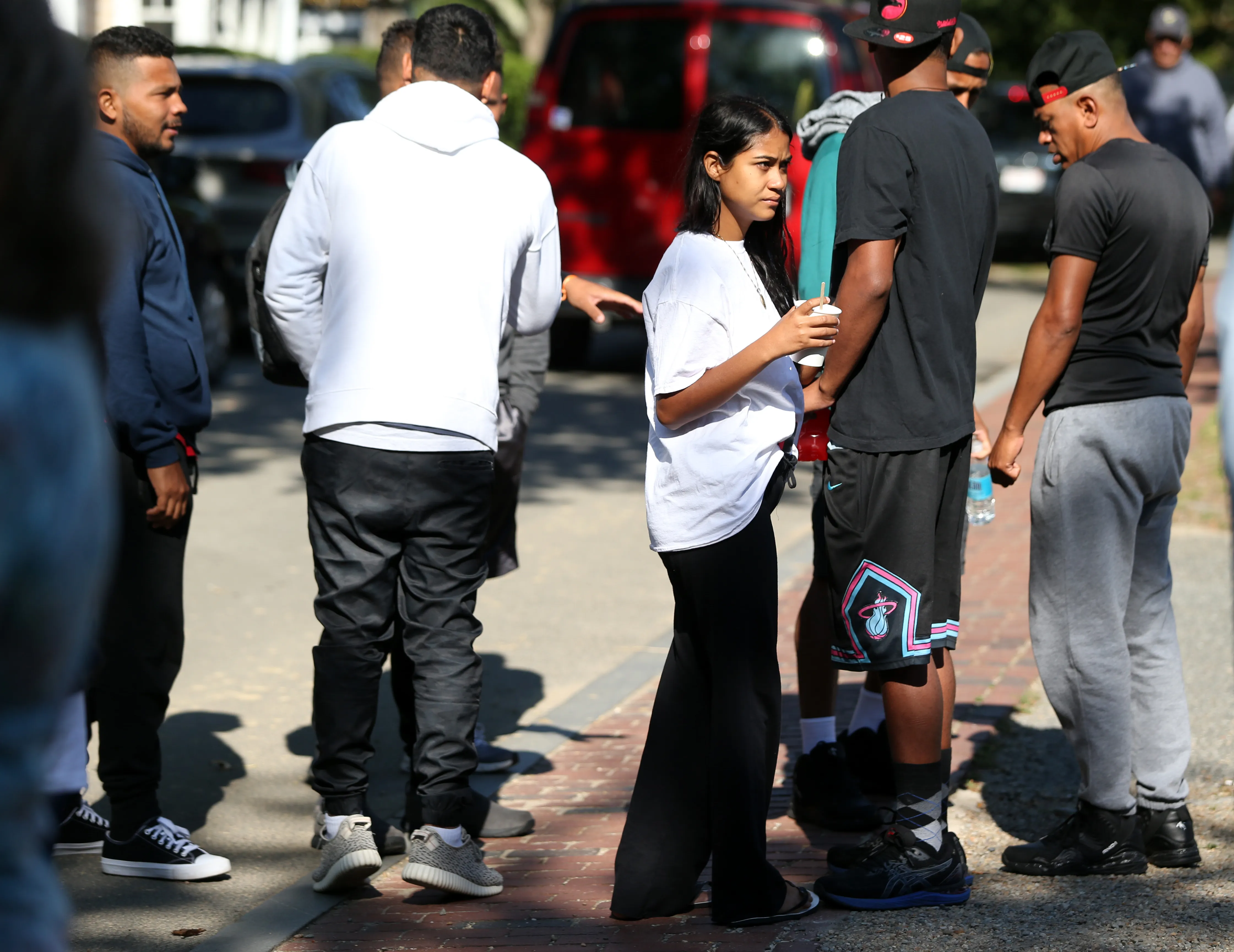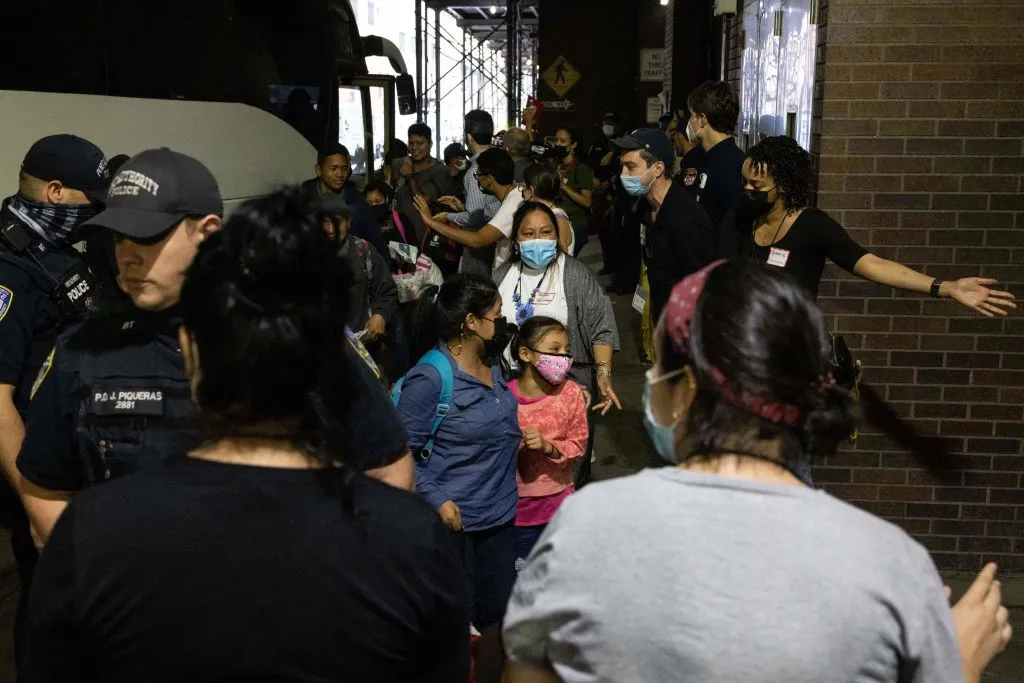What to Know
- The Adams administration is doing an about-face in regards to where it plans on housing hundreds of asylum seekers, as it plans on relocating migrants to a different part of the city.
- The city's first Humanitarian Emergency Response and Relief Center will no longer be built in the Bronx, but rather will be installed on Randall's Island
- The center will be able to house 500 individuals seeking asylum, and it is expected to open in "approximately the same timeframe" as the original Orchard Beach location was set to, the mayor said.
The administration for New York City Mayor Eric Adams is doing an about-face in regards to where it plans on housing hundreds of asylum seekers, as it plans on relocating migrants to a different part of the city.
In a statement released Monday night, Adams said that the city's first Humanitarian Emergency Response and Relief Center will no longer be built in the Bronx, but instead rather will be installed on Randall's Island. The sudden decision to change locations for the center comes after minor flooding came in the Orchard Beach neighborhood where the tent city had been under construction.
"While we would be able to put in place the necessary ponding mitigation measures, relocating the Orchard Beach humanitarian relief center to Randall's Island is the most efficient and effective path forward, and work is underway to make this move," Adams said in a statement, adding that the new location is less flood-prone and closer to public transportation options.
Get Tri-state area news and weather forecasts to your inbox. Sign up for NBC New York newsletters.
The center will be able to house 500 individuals seeking asylum, and it is expected to open in "approximately the same timeframe" as the original Orchard Beach location was set to, the mayor said. The Bronx center was scheduled to be open by the end of the week.
"We continue to build out our options and explore additional sites as we handle this humanitarian crisis created by human hands," the statement from Adams read.
Earlier on Thursday, community leaders rallied against the tent city shelters entirely, saying that the migrants are not being treated fairly. They sought a judge to issue a temporary restraining order against it. But Adams shot down criticism.
"We want to get it right and we are not going to be afraid to try different things to solve the unprecedented problems we are facing," he said, while signaling for the first time that there may be some flaws in his plan. He also acknowledged that there had been some "puddling that took place" at the Orchard Beach location.
"There is not a one-size-fits-all on problems we have never faced before. You have to be bold enough to try and I keep saying over and over: I'm the man in the arena, so I'm going to keep trying."
The Humanitarian Emergency Response and Relief Centers are supposed to provide further assistance and support to the hundreds of asylum seekers arriving to the Big Apple from Texas and other states on a daily basis, while alleviating the strain that the influx of arrivals have had in the city's shelter system, Adams said in September.
The centers will provide a connection to a full list of services and support asylum seekers' needs by immediately offering shelter, food, medical care, casework services, among other options at an expertly designed and climate-controlled, safe space.
“More than 100 years ago, Ellis Island opened its doors to welcome in those ‘yearning to breathe free.’ Now, more than ever, it’s clear that we are again dealing with a humanitarian crisis created by human hands. While other leaders have abdicated their moral duty to support arriving asylum seekers, New York City refuses to do so,” Adams said.
According to the mayor, the migrant crisis that the city faces due to the influx of asylum seekers being bussed by Texas and other GOP-led states is a "humanitarian crisis" that has impacted the city's shelter system.
“This is not an everyday homelessness crisis, but a humanitarian crisis that requires a different approach," Adams said. "That’s why the Humanitarian Emergency Response and Relief Centers will be the first touchpoint for asylum seekers that will provide them with a range of services and support as families determine their next steps. This emergency response represents what we know must be done during this humanitarian crisis, as we continue to seek assistance from our federal and state partners to continue this work. Like the generations that came to our city before, New York will provide the thousands now coming to our city with the foundation to build a better life.”
NYC MIGRANT CRISIS
There are few places in the U.S. with a more deeply ingrained reputation as a refuge for immigrants than New York City. But for Adams, reconciling that image with an influx of migrants landing in the city, including thousands being bused there by Republican Gov. Greg Abbott of Texas, is proving difficult. The city is struggling to accommodate what Adams says has totaled more than 13,000 asylum seekers, leading him to explore whether New York can ease its practices for sheltering the homeless or even temporarily house migrants on cruise ships. Both ideas have drawn blowback from liberal advocates who are influential in the city’s politics.
Adams is one of several leaders of Democratic-leaning jurisdictions facing a sudden test of their commitment to being “sanctuary” cities or states. The designation, in which local officials pledge to limit their cooperation with federal immigration authorities, has long proved popular among progressives pressing to ensure the government treats migrants humanely.
But officials say the policy is being exploited by leaders hoping to make a political point. The reality that migrants are being used as political pawns has taken a deadly turn as an asylum seeker took her own life in a New York City shelter, Adams said Monday, lamenting the tragedy that befell the woman he says came to the United States in search of a better life.


Hundreds of asylum seekers like her have been coming to New York City every week, transported from Texas, or in some cases, Florida, on buses dispatched by governors amid a political dispute with the Biden administration over immigration. Adams has said those migrants will be welcomed with open arms, but he has also called on the federal government to provide more financial assistance to a city struggling with the cost of providing shelter.
New York City is one of the few municipalities with right-to-shelter laws, guaranteeing that anyone who presents to a designated intake center by a set time must be placed in a shelter on the same day. Yet News 4 has reported on shelter violations affecting both families and single individuals over the last few months, including as recently as last week.
The hope is that the new centers will provide relief to the struggling in the shelter system, while still allowing the city to offer comprehensive on-site services and referrals to asylum seekers.
The NYCEM and H+H will operate the Humanitarian Emergency Response and Relief Centers, the city said, adding that two humanitarian relief centers will open in the coming weeks: one in Orchard Beach, which will open and first serve adults; a second location is still being finalized.
Additional humanitarian relief centers may be opened in the coming weeks, as needed, according to the city. The plan is for buses to arrive directly at Humanitarian Emergency Response and Relief Centers or be directed there from the Port Authority, the city said. All asylum seekers who want them will be provided with settlement options, as well as immediate health, safety, and legal information.
Asylum seekers who cannot find immediate housing options will stay at humanitarian relief centers for approximately 24 to 96 hours, the city said, adding that these approximate times can change depending on the situation. The additional assessment time will ensure asylum seekers understand their options and can get to their desired destination quickly and smoothly.




